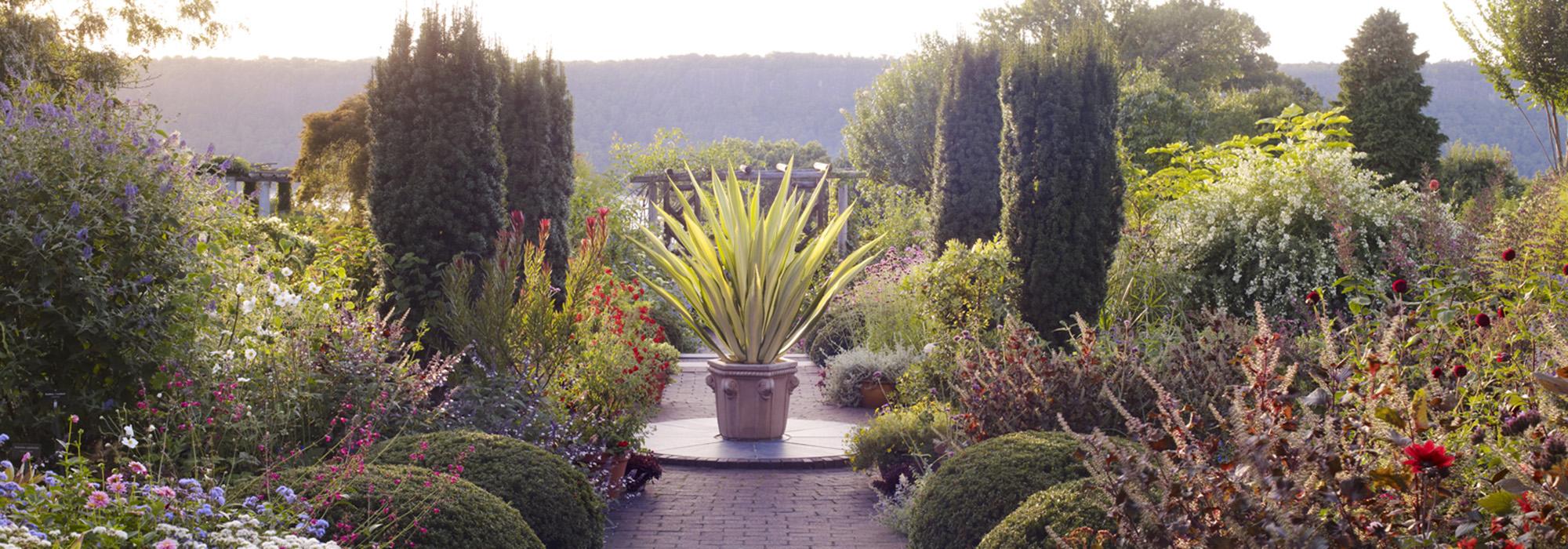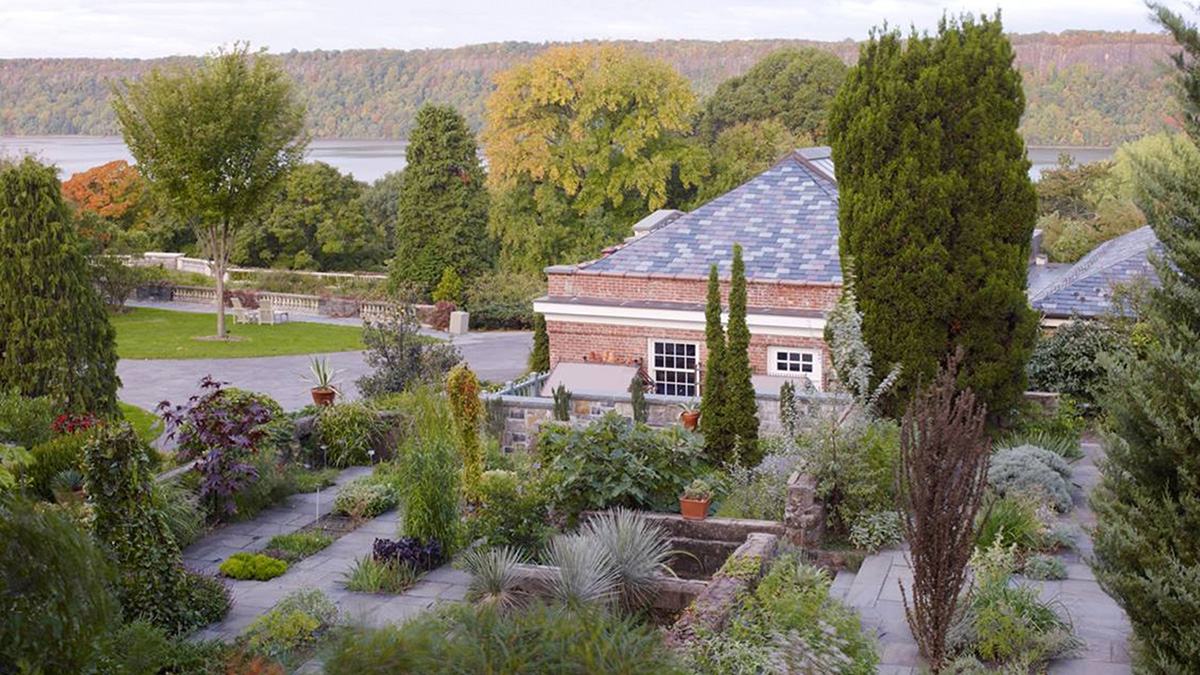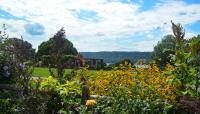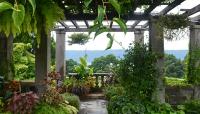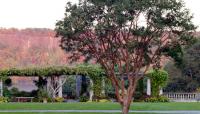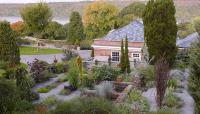Landscape Information
Located nine miles north of Manhattan on an elevated site overlooking the Hudson River, the former private estate is evolved over time under numerous owners, including William Lewis Morris and William Henry Appleton. The final private owner, George Walbridge Perkins, resided there from 1903 to 1920. The two main buildings on the site - Wave Hill House built in 1843 in the Greek Revival style, and the Georgian Revival Glyndor House constructed as the third house on its site in 1926 - overlook the Palisades, ancient, steep cliffs that stretch 30 miles up the west shore of the Hudson River.
Through collaboration with landscape designer Albert Millard and architect Robert M. Byers, Perkins expanded Wave Hill, uniting what had been separate properties into one estate. The extensive grounds were designed with formalized elements that include terraced gardens, numerous vistas, an Italianate pergola, and a waterlily pond, with stone architectural and sculptural elements interspersed throughout the site. With Perkins, Byers designed the greenhouses, a two-story recreation building, and a swimming pool. The grounds and expansive views of the Hudson Highlands remain intact today. Donated to the City of New York in 1960 and operated as a public garden and cultural center, the estate was designated a New York City Landmark in 1966 and was listed independently in the National Register of Historic Places in 1983 and part of the Riverdale Historic District listing in 1990.



